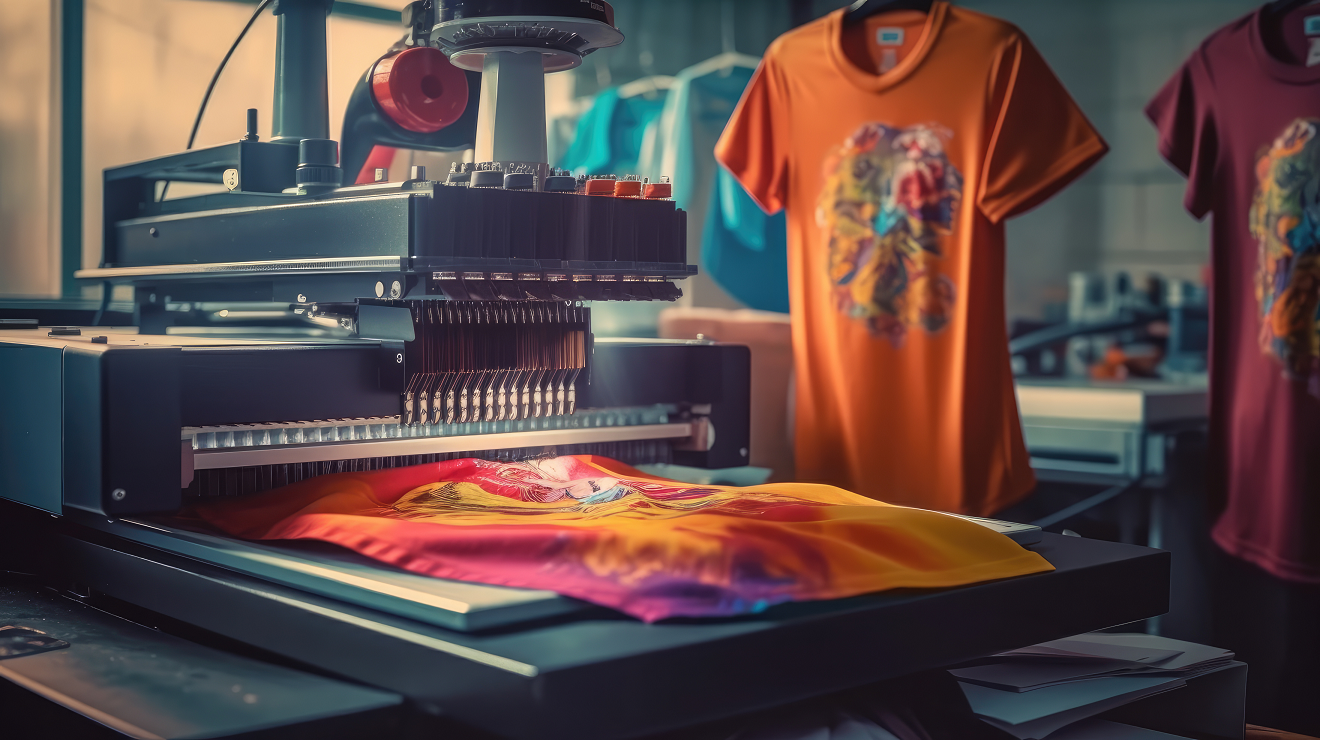Tailor-Made Success Using Make to Order for Your Apparel Brand
Understanding the complexities of Make to Order (MTO) manufacturing is crucial in comprehending its significance. The process begins with a customer’s order, as opposed to Make to Stock (MTS) operations which rely on pre-existing inventory. This ensures that each product is tailored specifically for the individual needs of the customer, allowing for a level of personalization unmatched by other production systems.
MTO involves intricate coordination and communication among all stages of the process. From obtaining customer specifications and managing supply chains to aligning production schedules, every aspect must work seamlessly in order to achieve desired results. Given that each product is unique and customized according to the specific order placed by the customer, maintaining quality control throughout this highly personalized approach plays a critical role in ensuring overall satisfaction.
Overall, MTO manufacturing brings about challenges but also benefits through its focus on meeting individual orders rather than relying on existing stock levels like traditional MTS processes do. This requires careful management at every step - from receiving an initial request until final delivery - thus making it essential for manufacturers operating under an MTO system to have strong organizational skills along with effective communication channels in place for optimal execution to meet client demands.
From Raw Materials to Customized Goods
MTO manufacturing is a process in which raw materials are utilized and transformed according to specific production methods, resulting in customized products that showcase the value of personalization. It all begins with receiving an order from a customer, detailing their specifications for the desired product. Subsequently, the actual manufacturing commences as these raw materials undergo transformations until they become the final output, ranging anywhere from specialized machine parts to bespoke garments.
Each step along this tailored procedure caters towards fulfilling each individual customer’s requirements, adding an authentic touch of distinctiveness to each and every order placed.
Aligning the Manufacturing Process with Consumer Demand
The foundation of MTO manufacturing is aligning production with consumer demand. This involves starting the production process only after confirming a customer’s order, allowing for flexibility and quick adaptation to market trends. To achieve this, it is essential for MTO businesses to have efficient supply chain management in place and utilize technology such as real-time inventory tracking.
This responsive approach allows MTO businesses to stay agile while meeting customers’ specific needs precisely on time. By utilizing demand-driven manufacturing processes, they can deliver products that are exactly what their customers want when they want them.
Spotlight on Industry Innovators: Make to Order Pioneers
Pioneers in the MTO domain are redefining what’s possible in their respective industries. By offering unparalleled customization and leveraging cutting-edge technology, these trailblazers are setting new standards for what customers can expect from MTO businesses. From Nike By You revolutionizing made-to-order sneakers to Ralph Lauren offering advanced personalization of its flagship Polo shirts, these innovators are making a mark in their industries.
But it’s not just about customization. MTO pioneers are also harnessing the power of technology, using tools like manufacturing software and Enterprise Resource Planning (ERP) systems to optimize operations and stay ahead of the competition. Through the fusion of customization and technological innovation, these pioneers are creating a powerful competitive edge in the marketplace.
Technology-Driven MTO Enterprises
The role of technology in the world of MTO manufacturing cannot be underestimated. Forward-thinking Make to Order enterprises are taking advantage of tools such as automation, 3D printing, and AI to streamline their production methods and enhance product quality. For example, renowned companies like L’Oreal have integrated 3D printing into their manufacturing processes while others are utilizing AI for tasks like factory automation and predictive maintenance.
Thanks to these technological advancements driving them forward, these fashion enterprises not only see a significant improvement in efficiency, but also set new industry benchmarks with each innovative solution they produce.
The Competitive Edge of Make to Order Strategy

The MTO approach offers numerous advantages, including the ability to meet unique customer requirements, foster stronger connections with customers, and produce standout products. By aligning production with actual demand from customers, this strategy also reduces waste and improves overall efficiency.
One of the biggest benefits of using an MTO strategy is its impact on an apparel company’s financial performance. This method helps minimize inventory costs while also mitigating losses due to unsold goods. It allows businesses to consistently deliver high-quality customized products, which can give them a competitive edge in their market.
Catering to the Market of One
One distinguishing aspect of made-to-order (MTO) businesses is their ability to cater to the individual needs and preferences of each customer. This focus on the “market of one” allows MTO companies to offer fully customized products that result in high levels of satisfaction and foster long-term loyalty.
Success with this approach demonstrates how catering to the market of one can give MTO businesses a unique edge over competitors. By providing personalized options for customers and delivering them within a relatively short timeframe, these apparel and footwear businesses are able gain an advantage in the market through increased customer satisfaction and retention.
Waste Reduction and Quality Control
The MTO strategy offers significant advantages in terms of waste reduction and quality control. By manufacturing based on confirmed orders, MTO businesses can effectively minimize waste and maximize resource utilization. This not only optimizes production processes, but also ensures a high level of quality control.
Through the individual focus on each order, apparel MTO businesses are able to guarantee that their final product meets required standards and satisfy customer expectations. This strong commitment towards reducing waste while maintaining product excellence highlights the sustainability and customer-driven approach of these companies.
Operational Challenges Faced by Make to Order Businesses
Despite its numerous benefits, the MTO model does have some difficulties. The unpredictability of sales and fluctuations in demand can present operational hurdles as products may not meet projected expectations or experience sudden spikes for which businesses are unprepared. MTO apparel and footwear enterprises also face the task of finding a balance between customization and efficiency. While personalization is a major draw to MTO services, it can complicate production processes and hinder operational efficacy.
These challenges are not insurmountable with proper planning techniques and effective inventory management practices along with strategic use of technology. Despite initial obstacles encountered by MTO companies due to their unique approach to operations. They possess potential opportunities within them waiting to be unlocked- after all, every challenge brings forth hidden prospects.
Tackling Irregular Sales and Demand Fluctuations
Coping with unpredictable changes in sales and demand can be a challenging task, but MTO businesses are stepping up to the challenge. They employ various strategies to remain agile and promptly address fluctuations in demand.
Implementing flexible planning methods
Diversifying their supply chain
Utilizing data analysis to forecast future sales trends and adjust production planning accordingly.
By effectively managing irregular sales patterns and shifts in customer demands, MTO businesses ensure smooth operations while maintaining high levels of customer satisfaction.
Balancing Customization with Efficiency
Finding a balance between personalization and effectiveness is crucial for businesses that operate on the make-to-order (MTO) model. While customizing products allows MTO businesses to provide distinct, personalized items, it also introduces complexities in their manufacturing process which can impact efficiency. Leveraging automation and artificial intelligence (AI), these companies can streamline operations while still offering high levels of customization.
Maintaining this equilibrium enables MTO apparel enterprises to achieve profitability while fulfilling customers’ demands.
The Future is Tailored: Trends Shaping Make to Order Manufacturing
The outlook for MTO manufacturing is optimistic, as numerous emerging trends are shaping the fashion industry. The incorporation of automation has significantly improved MTO processes by reducing lead times and enhancing product quality. The utilization of cloud computing and AI is becoming more prevalent in MTO businesses, offering enhanced data accessibility, collaboration opportunities, and decision-making capabilities. These developments not only impact the future of MTO manufacturing, but also influence advancements throughout the entire industry.
With a continuous focus on innovation and adaptation among MTO companies, their potential for success in the future remains strong. With an emphasis on customization efficiency through technology-driven solutions, these enterprises are poised to redefine traditional methods within production settings. Therefore, the upcoming era can be confidently described as tailor-made thanks to pioneering efforts from MTO manufacturers leading this transformation.
Embracing Automation to Streamline Processes
Automation is becoming increasingly significant in the field of MTO manufacturing. The advantages of implementing automation include:
- Simplifying procedures
- Decreasing manual work
- Enhancing productivity
- Elevating product standards
- Decreasing production time
With the ongoing digital evolution, manufacturers who specialize in MTO products are integrating automation into their operations to stay competitive and meet evolving consumer demands.
Optimizing Your Fashion Make to Order Model

Efficient utilization of resources and maintaining competitiveness are key elements in optimizing the MTO model. To enhance operations and provide exceptional customer service, there are several best practices that businesses can implement:
- Improving production schedules to ensure flexibility
- Using data for informed decision-making
- Streamlining processes and eliminating bottlenecks
- Implementing lean manufacturing principles
By promoting collaboration among departments, continuously monitoring performance metrics, investing in technology and automation, and regularly reviewing customer requirements, businesses can stay ahead of competition.
With an emphasis on establishing flexible production schedules using relevant data for decision-making, the effective streamlining of processes, reducing bottlenecks by implementing lean manufacturing principles through cross-departmental collaborations, will enable consistently high-quality products as per changing consumer demands. Maintaining a constant focus on analyzing performance indicators while periodically upgrading skill sets with training programs is vital to success. The adoption of these strategies enables sustained progress to overcome obstacles so fulfilling client expectations-the ultimate goal.
In order for MTO businesses to achieve long-term success, it’s crucial they adopt proven optimization techniques. These include maximizing resource usage, maintaining competitiveness, scheduling based upon necessary adaptations, promoting well-informed decisions, stability via proper department coordination, maximizing efficiency by removing constraints according to Lean Manufacturing Policies. It also involves keeping track of company-wide results, numerical analyses, frequent technological advances implementation together continuous updates when adapting variables specifications. Assuring staff development must never be neglected. This regime all contributes toward eventual prosperity while overcoming immediate challenges.
Enhancing Production Schedules
Efficient production scheduling is crucial for the success of businesses that operate on a made-to-order (MTO) basis. Careful and detailed planning of all stages in the production process, along with flexibility to adjust schedules according to changing demand, are essential strategies. Timely delivery of products and a well-organized workflow contribute significantly to maintaining productivity levels in MTO operations. The key principle is remaining adaptable and responsive in order to effectively meet customer needs and adapt to market fluctuations.
Harnessing Data for Better Decision Making
In today’s data-centric society, the use of data plays a critical role in ensuring success for MTO businesses. Some potential ways to utilize data include: predicting demand, managing inventory levels, analyzing customer behavior patterns, optimizing production processes and identifying emerging trends.
Data can enable MTO enterprises to streamline their operations and make well-informed decisions. By tapping into various sources of information available through technology advancements such as AI or big-data analytics platforms - organizations are able to identify areas that require improvement while keeping costs at bay - staying ahead within ever-evolving markets remains key!
Through implementing strategies reliant on capturing actionable insights from collected datasets, companies can easily detect inefficiencies hindering growth opportunities. Eventually serving them a competitive edge over rivals when leveraged properly across all business units.
Summary
In the world of manufacturing, MTO apparel businesses are a breath of fresh air. Their commitment to delivering highly customized products sets them apart from traditional manufacturing businesses. By aligning production with actual customer demand, MTO businesses not only provide a personalized shopping experience, but also keep inventory costs low and reduce waste.
Yet, like any business model, MTO comes with its own set of challenges. From irregular sales and demand fluctuations to the complexity of managing highly customized production processes, MTO businesses face numerous operational hurdles. But with the right strategies and the innovative use of technology, these challenges can be overcome. As MTO businesses continue to innovate and adapt, they are setting new standards for what customers can expect from manufacturers. The future of manufacturing is indeed tailored, and MTO businesses are leading the way.
Whether a Make to Order or Traditional Production Strategy, Apparel Business Systems Delivers

Apparel Business Systems (ABS) offers
versatile solutions that adeptly cater to both Make to Stock (MTS) and Make to Order (MTO) production strategies, particularly essential for multi-channel sales in the fashion industry. Our sophisticated ERP system is designed to efficiently handle the complexities of inventory management, production scheduling, and customer order fulfillment. This flexibility ensures that whether a brand operates on a demand-forecast basis or focuses on custom-made orders, ABS's software streamlines operations, enhancing both operational efficiency and customer satisfaction in a dynamic market.
Contact us to learn more!
info@apparelbusiness.com


We will get back to you as soon as possible.
4325 Alexander Drive, Suite 100
Alpharetta, GA 30022-3740
Apparel Business Systems | All Rights Reserved










